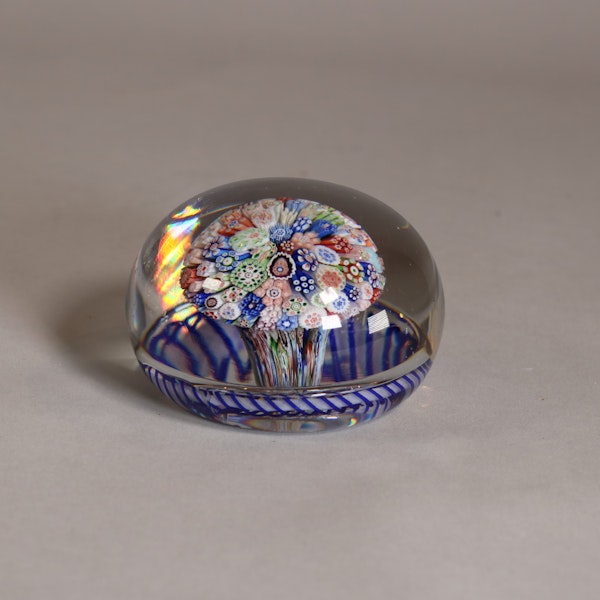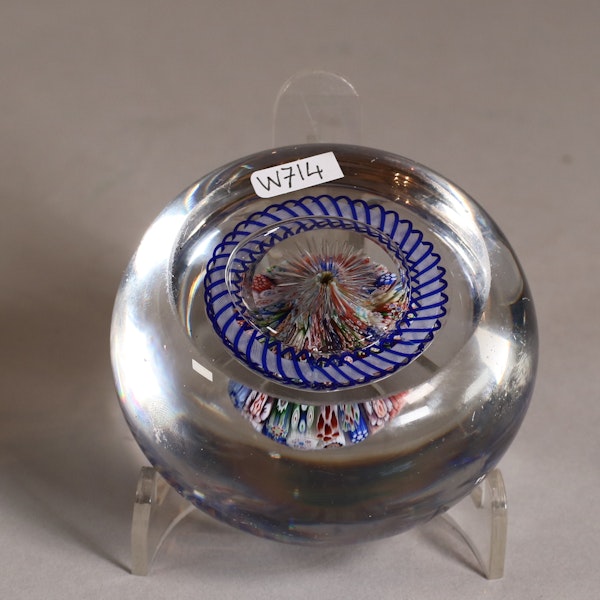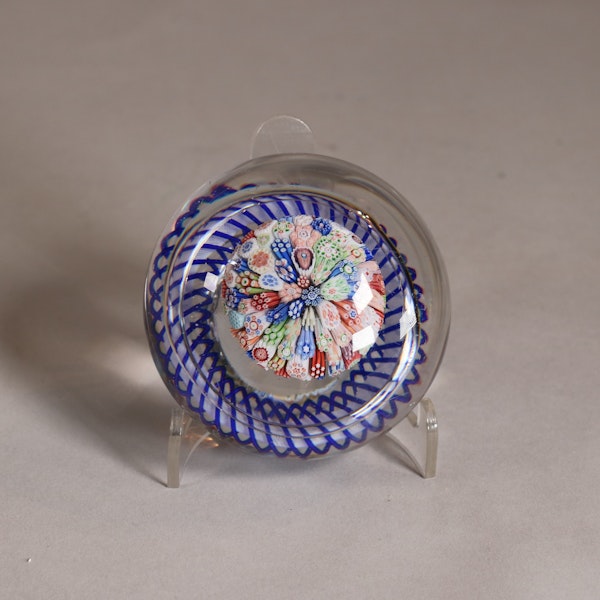Baccarat close-packed millefiori mushroom glass paperweight, c.1850
Baccarat close-packed millefiori mushroom glass paperweight, c.1850
POA
Description
Baccarat close-packed millefiori mushroom glass paperweight, c.1850, the tuft comprising assorted brightly coloured composite canes spreading from an elongated stem into a mushroom shape near the crown of the weight, all within a spiralling blue and white latticinio torsade, with a star-cut base.
Diameter: 7.7cm. (3 in.)
Notes:
The millefiori (‘thousand flowers’ in Italian) paperweight technique was most likely developed concurrently by glassworkers in Venice, France and Bohemia during the 1830s; the earliest extant examples date to the 1840s. However, France soon emerged as the centre of production, with three manufactories in particular producing a range of weights of exceedingly high quality: Baccarat, Saint Louis, and Clichy. The Baccarat factory had been founded in the 18th century and was known for its high quality crystalware including bottles, stemware and chandeliers; its glass particularly heavy due to its high lead content. Its artisans perfected the millefiori technique in the mid-19th century. Interestingly, Baccarat was the only factory to produce canes with twenty and twenty-two cogs.
Provenance: Sotheby's New Bond Street, London, 26th January 1970, Lot 145.
| item details | |
|---|---|
| Material and Technique | Glass paperweight with colourful glass canes |
| Origin | French |
| Period | 19th Century |
| Diameter | 7.7cm. (3 in.) |
Product REF: W714






